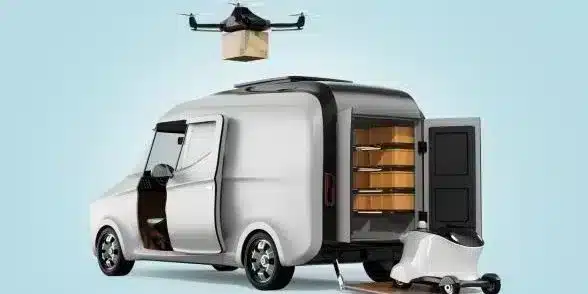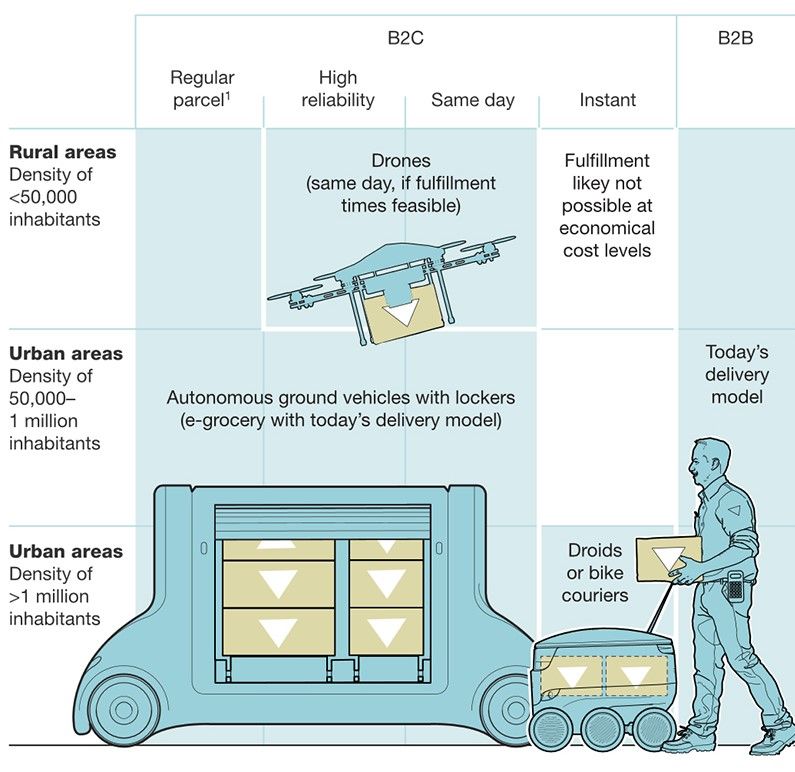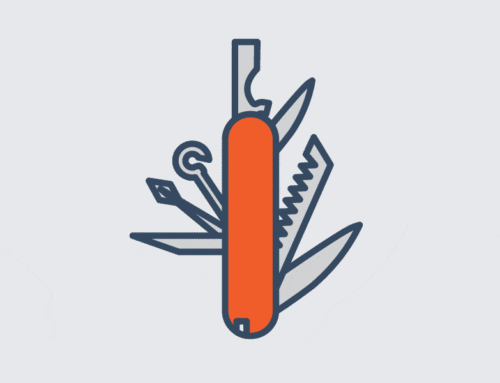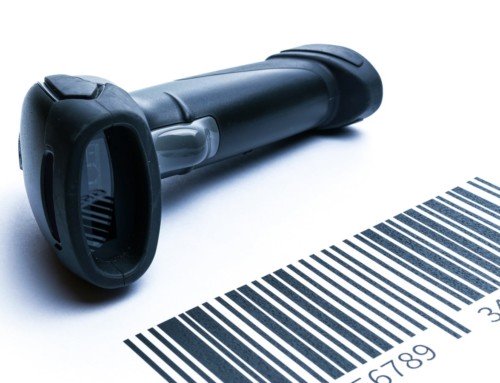The evolution of last-mile deliveries: Developments, tendencies and the boom in autonomous systems
The explosion of online retailing has fundamentally changed the retail sector and created a growing demand for efficient last-mile delivery solutions.
In 2023, a number of emerging technologies and initiatives are shaping the future of the delivery segment, driven by the necessity to boost efficiency, reduce costs and enhance the consumer journey.
So let’s take a look at the key trends and facts that reveal the transformative role of last-mile delivery. From integration of various delivery methods to leveraging data analytics, embracing real-time tracking tech and considering environmental responsibility, businesses are taking bold steps to meet evolving consumer demands.
Moreover, the autonomous last-mile delivery market is developing quickly, thanks to technological advances and the growing demand for fast, convenient parcel delivery.
Future developments and technologies shaping last-mile delivery in 2023
The last-mile delivery sector is changing at a rapid pace, driven by innovative initiatives and emerging trends. By 2023, 13 key innovations and trends are set to have a major impact on the industry.
- Integration of Delivery Methods: Retailers are moving to a hybrid model that combines their fleet with third-party providers and participative delivery options. This model gives greater control and flexibility over last-mile operations, allowing businesses to streamline costs and enhance the delivery experience.
- In-house Shipping Carriers: More and more businesses are investing in their own fleets to offer secure local delivery solutions. This allows retailers to better control costs and the overall delivery experience.
- Data Analytics: By capitalizing on customer behavior analysis and demand forecasting, businesses can improve delivery lead times, personalize the purchasing experience and improve overall performance.
- Urban storage facilities: Locating storage facilities in urban areas minimizes transit time and improves the customer experience by enabling faster deliveries.
- Real-time Tracking Technology: Providing customers with up-to-date information on the delivery process strengthens their sense of control and improves their overall satisfaction.
- Autonomous Vehicles: Firms like Amazon are investing in autonomous vehicles and delivery drones, making 24/7 deliveries a real possibility. Nevertheless, the laws and policies regarding autonomous vehicles are still being worked out.
- Sustainable Logistics: Companies are investing in electric delivery vehicles to tackle transport-related environmental concerns.
- Large and Heavy Item Delivery: Addressing the need for efficient delivery of oversized and heavy items is a growing concern in the last-mile delivery sector.
- Drone Delivery: The use of drones for delivery purposes is gaining ground, enabling quicker and more agile delivery options.
- Automated Last-Mile Delivery Management Platforms: Automation enables the optimization of delivery activities, cutting costs and increasing overall performance.
- Route Planning and Optimization Software: Optimizing delivery routes increases operational performance and cuts transit lead times, leading to greater customer delight.
- Contactless Delivery: The COVID-19 pandemic emphasized the need for contact-free delivery methods to ensure customer safety.
- Omnichannel Retailing: The integration of different sales channels provides consumers with a seamless shopping experience, which in turn fosters customer loyalty.

The expanding autonomous last-mile delivery segment
The autonomous last-mile delivery sector is seeing considerable expansion, fuelled by increasing demand for express parcel delivery and advances in delivery vehicle technology:
- Market Size and Growth: According to a study by Allied Market Research, the global autonomous last-mile delivery sector is expected to hit a value of $90.21 billion by 2030. In 2021, the size of the market was valued at $11.12 billion, with a forecast compound annual growth rate (CAGR) of 23.7% between 2021 and 2030.
- Factors Driving Growth: Demand for quicker parcel delivery and technological advances in delivery vehicles are the main factors driving growth in the autonomous last-mile delivery sector.
- Challenges and Opportunities: Limited infrastructure and strict government regulations are obstacles to market growth. Nevertheless, the development of delivery drones and more efficient delivery methods is creating opportunities for the industry.
- Vehicle Types: Ground delivery robots are forecast to lead the market up to 2030, contributing almost two-fifths of the global market share in 2021. Aerial delivery drones are set to experience the fastest annual growth rate, at 26.1%, between 2021 and 2030.
- Applications: The retail segment is projected to lead the market throughout the forecast period, driven by increased customer demand for retail goods.
- Geographical Trends: North America is set to take the major share of the market by 2021, accounting for two-fifths of the global autonomous last-mile delivery market. The region’s adoption of advanced technologies and ongoing expansion of the last-mile delivery systems are contributing to high market demand and investment.

The Future of Last-Mile Delivery: Innovations, Trends, and the Rise of Autonomous Solutions
The influence of technological advances on last-mile logistics
Technology has changed customer habits, increasing impatience and underlining the importance of effective last-mile delivery for transport and logistics operators.
To meet these changing customer expectations, businesses are adopting autonomous delivery solutions and setting up partnerships to optimize their operations:
- Changing Consumer Preferences: Customers are looking for instant satisfaction and shorter delivery times, hence the need for efficient last-mile delivery solutions.
- Autonomous Delivery Solutions: Autonomous vehicles, such as drones and ground delivery robots, provide the opportunity for rapid, convenient deliveries.
- Key Players: Companies like Amazon, FedEx, and Volkswagen are at the forefront of developing autonomous delivery solutions, with Amazon’s Prime Air drone system and FedEx’s autonomous road vehicles being notable examples.
- Partnerships: Partnership between companies that don’t have access to autonomous vehicles has become crucial. Zoom2U, for example, has partnered with Greyhound Australia to use buses to offer lower-cost next-day delivery services, and online truck aggregation service providers have bridged the gap between truck owners and end-users.
- Warehouse Optimization: As e-commerce continues to grow, efficient storage and organization of goods in warehouses become vital. Companies like DHL Supply Chain are investing in automation and robotics to optimize their warehouse operations.
- Streamlining the Supply Chain: Real-time tracking, route optimization, and analytics help streamline processes, improve employee efficiency, and meet customer expectations.
Innovative approaches and new technology are remodeling the last-mile delivery sector, offering possibilities for increased performance, customer service and durability.
With growing demand for quick parcel delivery and advances in delivery vehicle technology, the autonomous last-mile delivery industry is expected to reach a market value of $90.21 billion by 2030. The integration of various delivery methods, the harnessing of data analytics, the adoption of real-time tracking technology and a focus on sustainability are among the key trends driving the sector forward.
Businesses are also investing in their own delivery fleets, using in-house shipping carriers to better control costs and the delivery experience. The integration of autonomous vehicles, such as drones and ground delivery robots, offers the opportunity for faster, more convenient deliveries. Partnerships and collaborations are also put in place to benefit from existing network assets and optimize logistics activities.
As the e-commerce market continues to flourish, the demand for efficient last-mile delivery solutions will only continue to grow. By adopting technology, streamlining warehousing operations and rationalizing the supply chain, organizations are well positioned to satisfy consumer desires and succeed in the age of immediate gratification and e-commerce shopping.




